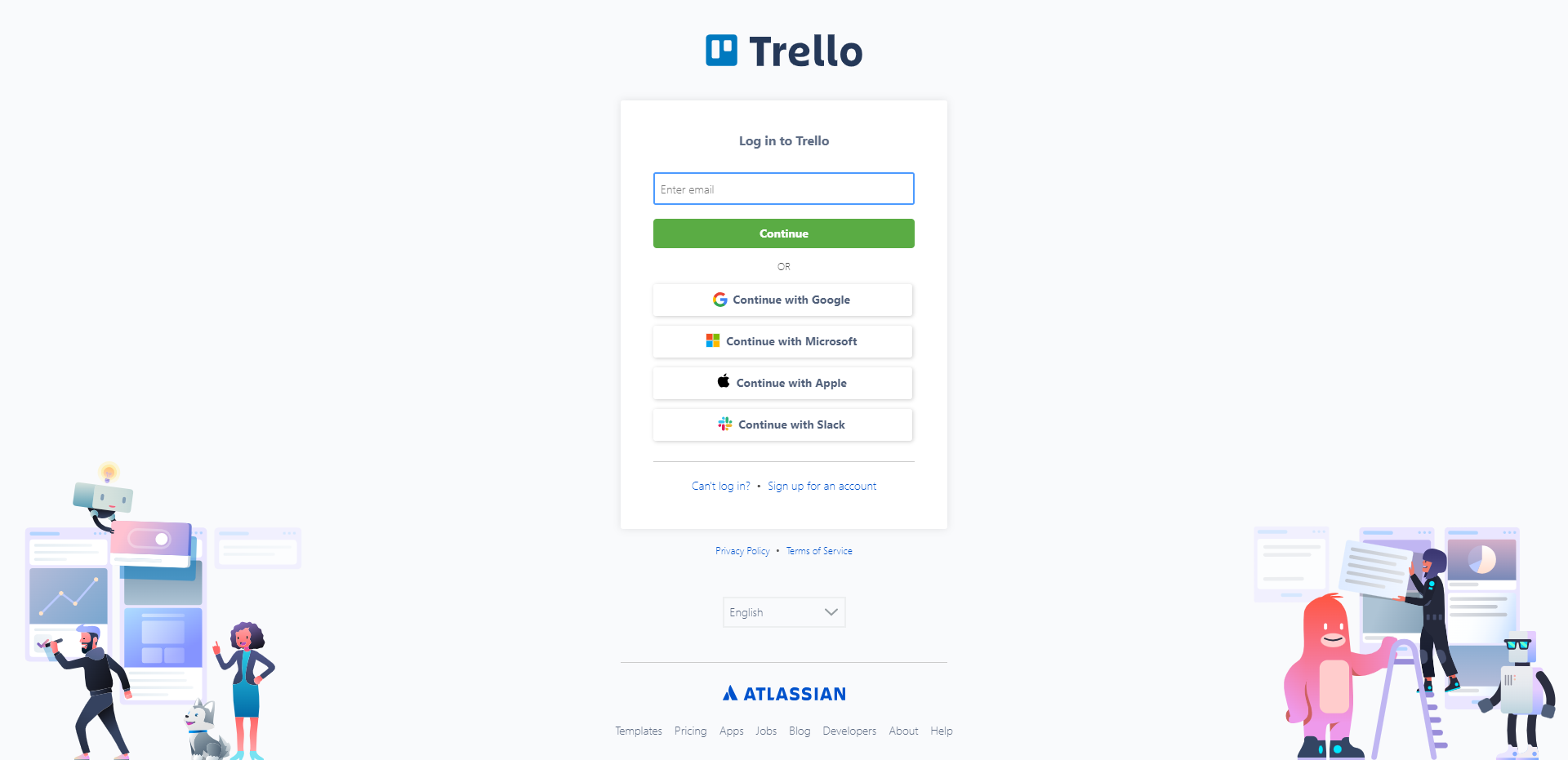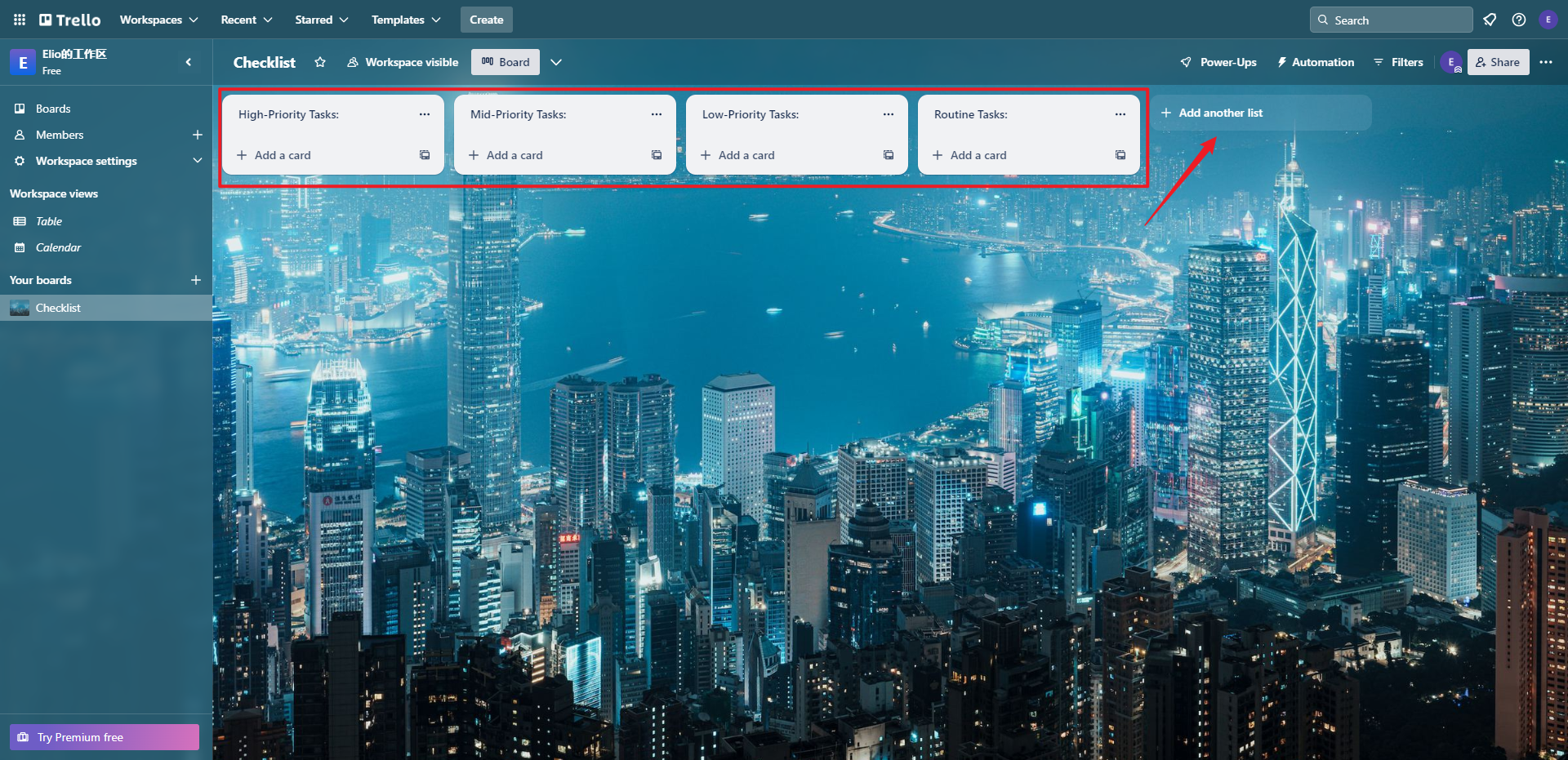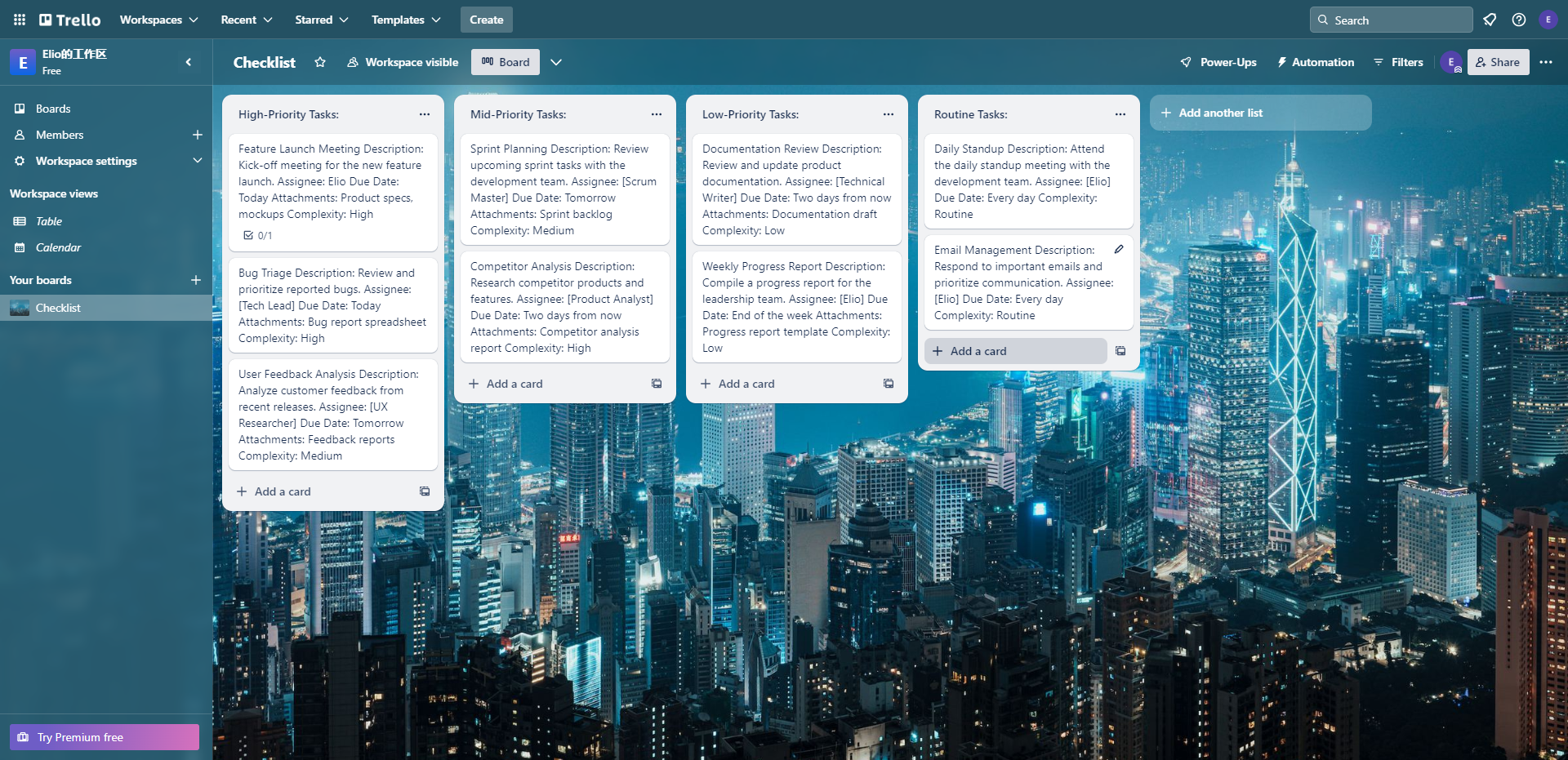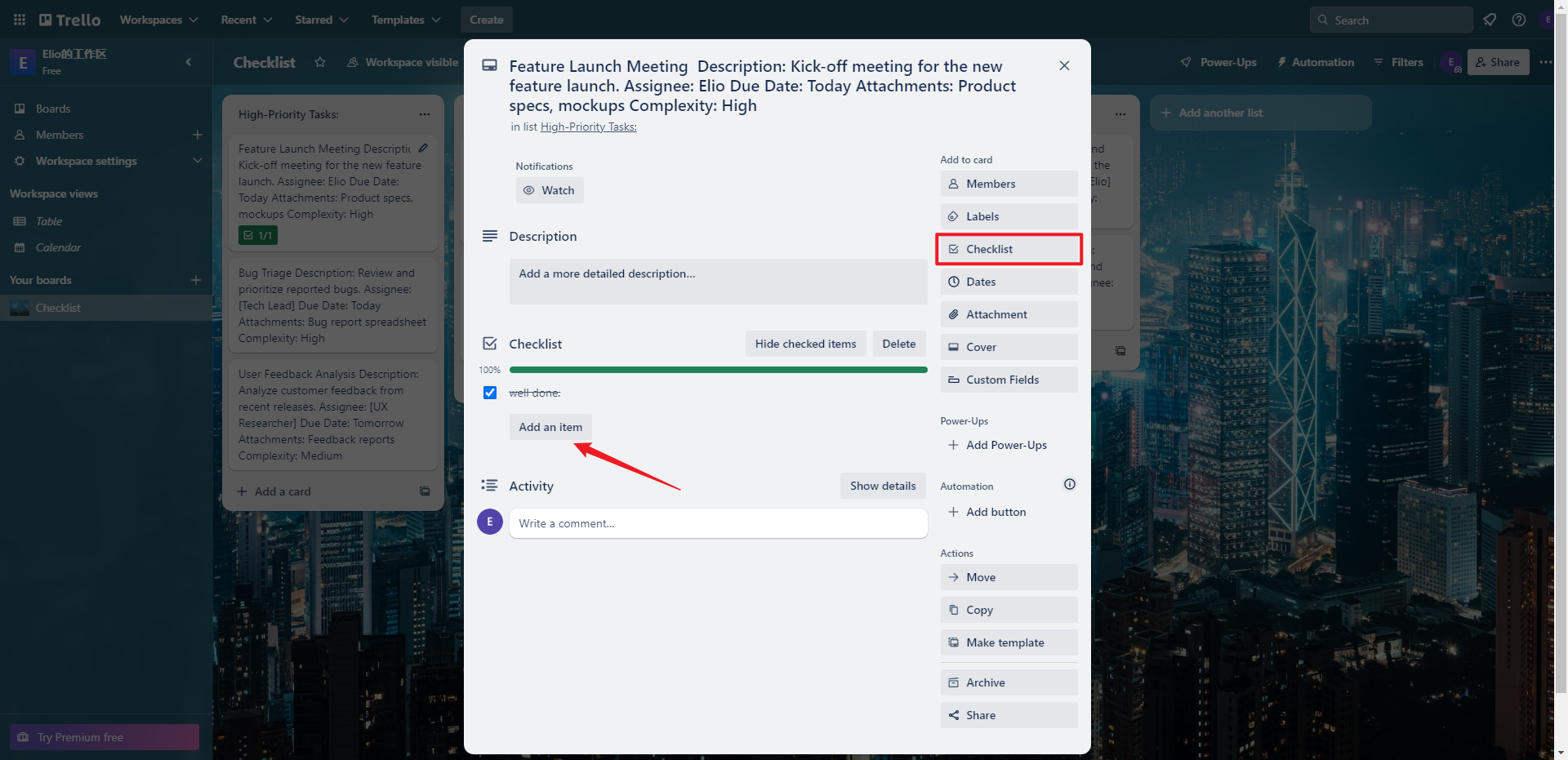Embark on a journey to streamline your task management with Trello, the versatile platform known for its intuitive interface and collaborative features. In this comprehensive guide, we delve into the nuances of Trello checklists, exploring why they have become a staple for effective project management. Uncover the pros and cons of Trello checklists. Whether you're a seasoned Trello user or a newcomer, this guide will equip you with the knowledge to optimize your checklist experience.
Brief Introduction to Trello
Trello, a dynamic project management tool, revolutionizes task organization through its ingenious use of boards, lists, and cards. Renowned for its user-friendly interface and collaborative prowess, Trello emerges as the preferred choice for both individuals and teams. The seamless integration of visual elements, coupled with its intuitive design, facilitates efficient project tracking and fosters teamwork.

As a versatile platform, Trello transcends traditional project management, offering a fluid and interactive experience that adapts to the unique needs of its users. Whether you're a solo entrepreneur or part of a large team, Trello's innovative approach to task management sets the stage for streamlined and effective collaboration.
Why Is Trello a Popular Option for Checklists
Trello has surged in popularity for checklist management due to several key factors that collectively enhance its appeal and utility:
Visual Appeal: Trello's visually intuitive interface presents checklists in a way that is both engaging and comprehensible. Users can quickly grasp the status and details of tasks, fostering a more transparent project overview.
Simplicity: Trello excels in its simplicity. The straightforward design allows users, regardless of their technical proficiency, to easily create, modify, and navigate checklists. This simplicity reduces the learning curve, making it accessible to a broad user base.
Adaptability: One of Trello's strengths lies in its adaptability to diverse needs. Whether managing personal to-do lists or coordinating complex team projects, Trello's flexibility accommodates a spectrum of use cases. Users can tailor the platform to suit their specific workflow requirements.
Seamless Collaboration: Trello facilitates seamless collaboration by enabling users to share and edit checklists effortlessly. This real-time interaction enhances task tracking, ensuring that teams stay aligned and projects progress smoothly.
In essence, Trello's popularity as a checklist management tool can be attributed to its visually appealing, simple, adaptable, and collaboratively empowering features, making it a go-to choice for efficient and effective task management.
Pros and Cons of Trello Checklist
Navigating the landscape of Trello checklists involves understanding both their strengths and potential limitations. Let's explore the pros and cons of Trello's checklist feature, dissecting its intuitive interface, collaborative features, and customization options, while also acknowledging aspects such as limited automation and the learning curve for advanced functionalities.
Pros:
- Intuitive Interface: Trello's checklist feature boasts an intuitive interface, ensuring users can effortlessly create and manage tasks. The visual appeal enhances user experience, making task tracking and completion more straightforward.
- Collaborative Features: Trello excels in fostering collaboration. Its checklist functionality enables seamless sharing and editing, promoting real-time interaction among team members. This collaborative approach enhances project coordination and accelerates task completion.
- Customization Options: Trello offers a high degree of customization for checklists. Users can tailor their checklists to fit specific project requirements, adjusting layouts and details to align with unique workflows. This adaptability contributes to a more personalized and efficient task management experience.
Cons:
- Limited Automation: One notable drawback of Trello checklists is the limited automation capabilities. While the platform excels in manual task management, users may find themselves needing additional automation for more complex workflows.
- Learning Curve for Advanced Features: Trello's advanced features, including intricate checklist functionalities, may pose a learning curve for some users. Achieving mastery over these features requires time and familiarity, potentially deterring those seeking a more immediate and straightforward solution.
In conclusion, Trello's checklist feature shines with its intuitive interface, collaborative prowess, and robust customization options. However, users should be aware of its constraints in automation, which may be limiting for those with intricate workflow needs.
How to Make a Checklist on Trello
Embark on a journey to optimize your task management with Trello by following this step-by-step guide:
Create a Trello Account: Begin by signing up for a Trello account. This straightforward process provides you with access to Trello's suite of project management tools.

Initiate a New Board: Once logged in, initiate a new board – your virtual workspace. Boards act as the primary organizational unit on Trello and serve as the foundation for managing tasks.

Add Lists for Task Categories: Within your board, add lists to categorize tasks. Lists represent different stages or categories of your project, providing a clear structure for task organization.

Create Cards for Individual Tasks: Break down your project into individual tasks by creating cards within each list. Cards are the actionable items that move across lists as they progress.

Utilize Checklist Feature within Cards: Within each card, leverage the checklist feature. This allows you to outline specific subtasks or components necessary for the completion of the main task, providing a detailed action plan.

Customize Checklist Items: Customize each checklist item as needed. Add due dates, labels, and attachments to enhance the context and organization of your checklist items, ensuring a comprehensive view of task details.
By following these step-by-step instructions, you'll harness the full potential of Trello's checklist feature, streamlining your project management and ensuring a systematic approach to task completion.
A Multifunctional Alternative to Trello - Boardmix
In the ever-evolving landscape of project management, Boardmix emerges as a formidable alternative to Trello, introducing advanced features that redefine how tasks are organized and executed.

Trello, while popular, carries limitations such as constrained automation and a learning curve for advanced functionalities. Boardmix steps onto the stage as a versatile solution, designed to not only address these shortcomings but to surpass them.
Trello's Shortcomings:
Limited Automation:
- Trello's automation capabilities are somewhat restricted, requiring users to invest time in manual task management for more intricate workflows.
Complex learning processes:
- Mastering Trello's advanced features, including checklist functionalities, poses a learning curve for some users, potentially hindering swift adoption.
How Boardmix Addresses Trello's Shortcomings:
Enhanced Automation:
- Boardmix elevates task management with advanced automation features. Users can create intricate workflows, automating repetitive tasks and streamlining processes efficiently.
Intuitive learning flows:
- Boardmix prioritizes user-friendly design, minimizing the learning curve. Its intuitive interface allows users to seamlessly transition from Trello, fostering quick and effortless adoption.
Collaborative Workflow Integration:
- Boardmix excels in collaborative functionality, providing a platform where teams can work together seamlessly. Real-time editing, commenting, and task updates enhance overall project coordination.
Visual Task Tracking:
- Boardmix introduces visual elements for enhanced task tracking. Dynamic charts, timelines, and progress indicators offer a clear overview of project status, ensuring teams stay on the same page.
Efficiency in task management is not just a goal but a fundamental necessity for individuals and teams navigating the complexities of projects. In this exploration of the benefits of making checklists paired with the unique features of Boardmix, we delve into a realm where task organization transforms into a seamless, collaborative, and highly customizable experience.
Benefits of Making Checklists and Boardmix Features:
Effective Task Organization:
- Checklists enhance task organization by breaking down projects into manageable steps. Boardmix amplifies this by offering a visual interface that allows users to organize tasks intuitively.
Improved Collaboration:
- Utilizing checklists fosters collaboration. Boardmix takes collaboration a step further, providing real-time updates, comments, and notifications to ensure seamless teamwork.
Customization Options:
- Boardmix offers extensive customization options for checklists, allowing users to tailor them to specific project needs. This adaptability ensures a personalized and efficient task management experience.
Time Efficiency:
- Making checklists saves time by providing a structured plan. Boardmix enhances time efficiency with automation features and visual cues, reducing manual effort and accelerating project timelines.
In essence, Boardmix emerges as a robust alternative to Trello, addressing its limitations while introducing advanced features for enhanced task management. With an intuitive design, collaborative prowess, and extensive customization, Boardmix offers a comprehensive solution for individuals and teams seeking a versatile and efficient platform.
Trello Checklist List FAQs
As we journey deeper into the realm of Trello checklists, it's essential to unravel the frequently asked questions that guide users through the nuances of this dynamic project management tool. This section brings clarity to common queries, providing concise insights that enhance your understanding of Trello's checklist features and its accessibility for various user needs.
What are advanced checklists on Trello?
Trello's advanced checklists empower users with enhanced functionality, allowing for a more comprehensive task management experience. Key features include:
- Due Dates: Users can assign specific deadlines to checklist items, adding a temporal dimension to task completion and project timelines.
- Attachments: Advanced checklists support attachments, enabling users to associate relevant files, documents, or multimedia directly with checklist items, ensuring all necessary resources are readily accessible.
- Labels: Users can categorize checklist items using labels, facilitating visual organization and providing additional context to distinguish between different types of tasks.
Is Trello actually free?
Yes, Trello offers a free plan that caters to the fundamental needs of individuals and small teams. The free plan includes essential features such as board creation, basic collaboration tools, and checklist functionalities. However, for users seeking a more robust toolkit with advanced functionalities, Trello offers premium plans at a subscription cost. These premium plans unlock a host of additional features, providing a scalable solution for larger teams or those with more intricate project management requirements.
In summary, Trello's advanced checklists empower users with versatile task management tools, while the platform's pricing model accommodates a spectrum of users, from individual freelancers to expansive teams, ensuring accessibility and scalability for diverse project needs.








